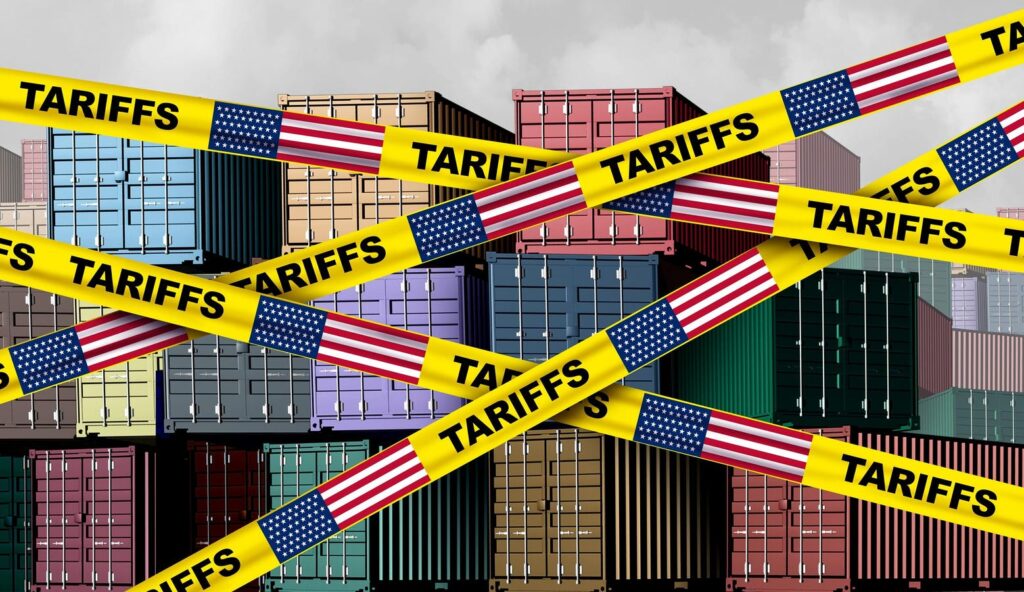Tariff Trouble: What The New U.S. Trade Policy Means For Customer Experience
Companies, consumers, and investors are all trying to make sense of the Trump administration’s newly announced tariffs. With prices expected to rise for all sorts of goods and services, a customer experience (CX) challenge looms for many businesses.
Beyond the delicate exercise of deciding if and how to raise prices, what should organizational leaders do to help their firms navigate these waters and come out stronger on the other side? Below are three important approaches to take:
1. Accentuate value.
Many businesses will likely need to raise prices to offset increased costs triggered by the tariffs. Even if your business doesn’t raise prices, your customers will be feeling financial strain from all the others who are.
So, whether your company is raising prices or not, leaders would be wise to accentuate the value of their offering through various forms of customer messaging (e.g., sales materials, marketing collateral, post-sale communications, etc.). To be clear, that’s not about focusing on price – it’s about emphasizing the benefits customers derive from your existing offering, no matter what the price point. For example: a streaming service promoting its breadth of content, an auto dealer accentuating its no-hassle purchase process, or a homebuilder highlighting the flexibility of its floorplans.
The more customers recognize the value you bring to them, the less price sensitive they’re likely to be – which is helpful when their budgets tighten, or your prices rise.
2. Reevaluate what’s relevant.
During periods of economic dislocation (triggered by things like new tariffs, recessions, or surges in unemployment), it’s important for every company to reevaluate what’s most relevant to their current and prospective customers. What was important to those constituencies last week may have little relevance today. And something they never paid any attention to previously might now be top of mind.
Those mindset shifts represent opportunities to adjust the customer experience (sometimes in very subtle ways) so it will resonate more strongly with your target clientele, given where their heads are post-dislocation.
Hyundai did this perfectly during the 2007-2009 Great Recession when they realized people weren’t buying cars – not because they didn’t have the money – but because they were afraid they’d buy the vehicle, lose their job the following week, and then be saddled with auto payments they couldn’t afford. Hyundai’s “Assurance” program gave buyers a guarantee that, if they got laid off, they could return their vehicle within one year of purchase, no questions asked. The program – because it capitalized on customer relevance – was far more effective than the traditional incentives other car makers employed at the time, such as bigger rebates and better financing deals.
During this period of tariff-induced disruption, don’t underestimate the opportunity that exists to tweak your customer experience so it better addresses the new rational and emotional needs exhibited by your customers.
3. Look for expense-saving CX improvements.
With prices rising and consumer confidence declining, CX program leaders are going to be dealing with angst not just from customers, but from executives, too. There will be belt-tightening, with even more scrutiny around customer experience investments.
For this reason, CX program leaders should look at their portfolio of current/planned projects and consider some reprioritization that elevates expense-saving CX improvements over revenue-enhancing ones.
An example would be upstream CX changes that help eliminate downstream, cost-inflating customer inquiries (e.g., better product assembly instructions, clearer and more comprehensible invoices, more seamless product return procedures, and even just better expectation-setting at point-of-sale). Those types of improvements translate into a better customer experience that can be delivered at a more competitive cost – thereby yielding a quicker and more quantifiable ROI that will no doubt appeal to a tariff-stricken C-suite.
As data from the Great Recession vividly illustrates, when it comes to navigating periods of economic distress, businesses that excel in customer experience outperform their peers. If companies lose sight of that, and start neglecting their customer experience, they’ll end up paying a price that far exceeds the cost of a tariff.
Jon Picoult is the author of FROM IMPRESSED TO OBSESSED: 12 Principles for Turning Customers and Employees into Lifelong Fans. Sign up for his monthly Customer Experience & Leadership eNewsletter here.
Read the full article here
